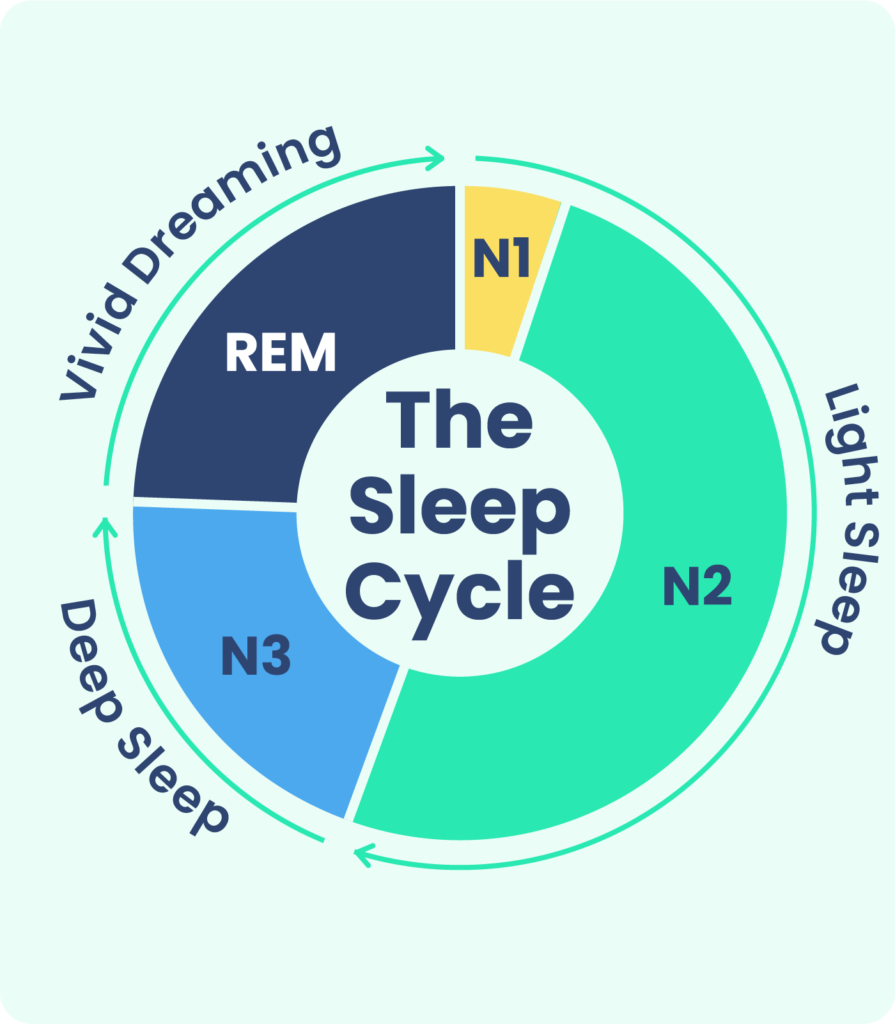The Science of Dreams
Written by: Chad Park
Dreams are a phenomenon that has intrigued humanity for centuries. Dreams captivate our nights, naturally leading to questions about their origins, function, and meaning. Dreams are a puzzling concept, with fascinating foundations for their existence, potential roles in cognitive processes, and interpretations that enrich the human experience.
What are Dreams?
Dreams are a complex series of images, thoughts, and feelings that mostly occur in the rapid eye movement (REM) stage of sleep, one characterized by increased brain activity and vivid sensory experiences. Universally experienced, dreams commence when the hypothalamus activates regions of the brain associated with wakefulness, prompting them to deactivate. In addition, dreams are involuntary: people have little control over what they dream of. Dream content varies widely among individuals, but common themes include everyday life, fantasies, and stressful situations. Scientists have identified several types of dreams, including lucid dreams and nightmares, but typical traits are attributed to most dreams — they are illogical, interactive, and emotional. During sleep, individuals progress through various stages, including Stage 1, Stage 2, Stage 3, and Stage 4, collectively known as slow-wave sleep, followed by the REM stage. This stage is marked by rapid eye movements and temporary muscle paralysis, facilitating vivid dream experiences. As such, the sleep cycle provides a dynamic framework for manifesting and exploring the human subconscious.
 Figure 1. The Sleep Cycle
Figure 1. The Sleep Cycle
Source: sleepfoundation.org/stages-of-sleep
Why do we dream?
The exact reason why we dream is still unknown, but scientists believe it may serve various functions. Several proposed theories include improving cognitive function through neural network consolidation, building memory, and processing emotion. Michelle Drerup, the director of the Behavioral Sleep Medicine Program at Cleveland Clinic Sleep Disorders Center, says, “Brain activity that occurs when we’re dreaming is similar to the memory processing brain activity we experience when we’re awake.” The similarities in neural processes between memory consolidation during wakefulness and dreaming suggest that dreaming could be a continuation of the brain’s cognitive functions while awake, improving processes such as memory processing and emotional regulation. The similarities in neural processes between memory consolidation during wakefulness and dreaming suggest that dreaming could be a continuation of the brain’s cognitive functions while awake, improving processes such as memory consolidation and emotional regulation. During wakefulness, newly acquired memories stabilize and integrate into existing knowledge networks. Similarly, during dreaming, especially in the REM stage, there is evidence that memories are replayed and integrated.
In order to store a memory, like song lyrics or the lines of a scene in a movie, the brain needs to be exposed to the material repeatedly. Repetition helps solidify the neural pathways associated with the specific information, making it more likely to be stored in the long term. During sleep, memories are consistently replayed, activating neurons in the hippocampus that reinforce and strengthen their recollection.
Processing emotion is also a key component of dreams. Dreams take our emotions from our daily lives and incorporate them into our vivid visions while dreaming. For example, a sad day may mean having gloomy dreams, while a happy event may correspond to exciting dreams. This emotion processing may explain why the amygdala, a small structure in the brain that regulates emotions when we are awake, is also active during sleep.
What do different dreams mean?
Dream analysis and interpretation are subjective matters– even if two people have the same dream, the dream’s meaning may be completely different for each of them. Although many scientists believe that dreams are mainly biological systems, it hasn’t stopped people from exploring the “hidden meanings” and “true feelings” behind them:
Some of the most common dreams are:
- Dreams of falling
Dreaming about falling from great heights is believed to be a sign that your life isn’t going so well. It is a symbol of fear and anxiety, and it may suggest that you need to take action.
- Dreams of being naked in public
Dreaming about being naked in public suggests that you are insecure about your imperfections and shortcomings.
- Dreams of being chased
Dreaming that you are being chased suggests that you are trying to avoid or escape something, whether it be your own emotions, a traumatic event, or love.
- Dreams of flying
Dreaming about flying can mean two different things. One, it can represent feelings of freedom and independence. On the other hand, they can express a desire to flee and escape the chains holding them back.
Conclusion:
Humans have constantly delved into the complex nature of dreams, examining the foundations of their existence, potential cognitive roles, and subjective interpretations. Our understanding has deepened, from the involuntary and varied content of dreams in the REM stage to the intricate sleep cycle. While the exact purpose of dreams remains elusive, theories point to improving cognitive function, memory consolidation, and emotion processing. Dream analysis, though subjective, reveals the emotional diversity embedded in common dream structures. The exploration of dreams adds to ongoing conversations about the mysterious and profound experiences that unfold in sleep.
References and Sources
Cleveland Clinic. (2023, November 27). Dreams: What they are and what they mean. https://health.clevelandclinic.org/dreams-and-dreaming
Kendra Cherry, Mse. (2023, November 3). 9 common dreams and what they might mean. Verywell Mind. https://www.verywellmind.com/understanding-your-dreams-2795935
Spencer, R. M. C. (2019, December 18). The Science of Dreams. Frontiers for Young Minds. https://kids.frontiersin.org/articles/10.3389/frym.2019.00140
Suni, E. (2023, December 8). Dreams: Why we dream & how they affect sleep. Sleep Foundation. https://www.sleepfoundation.org/dreams